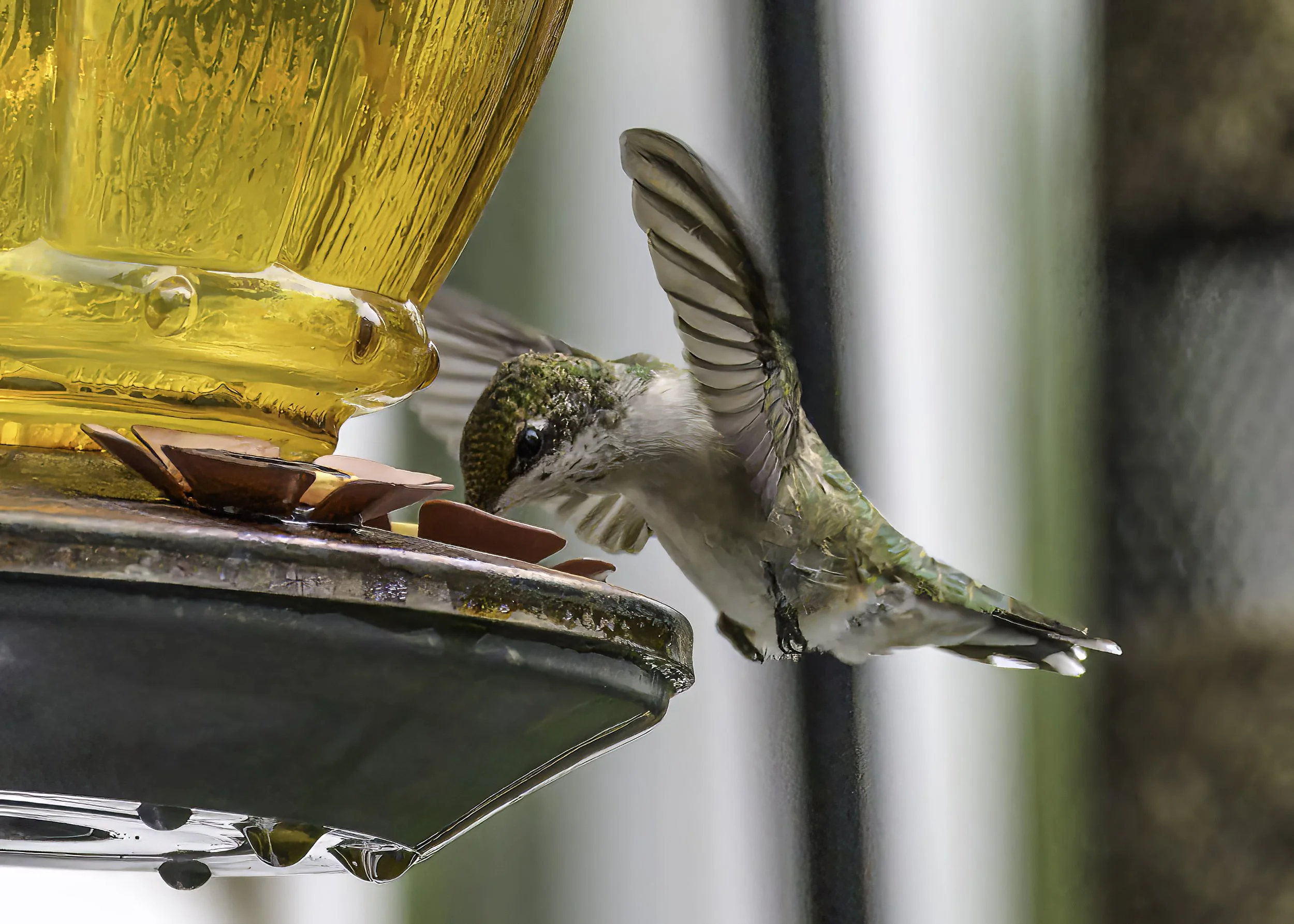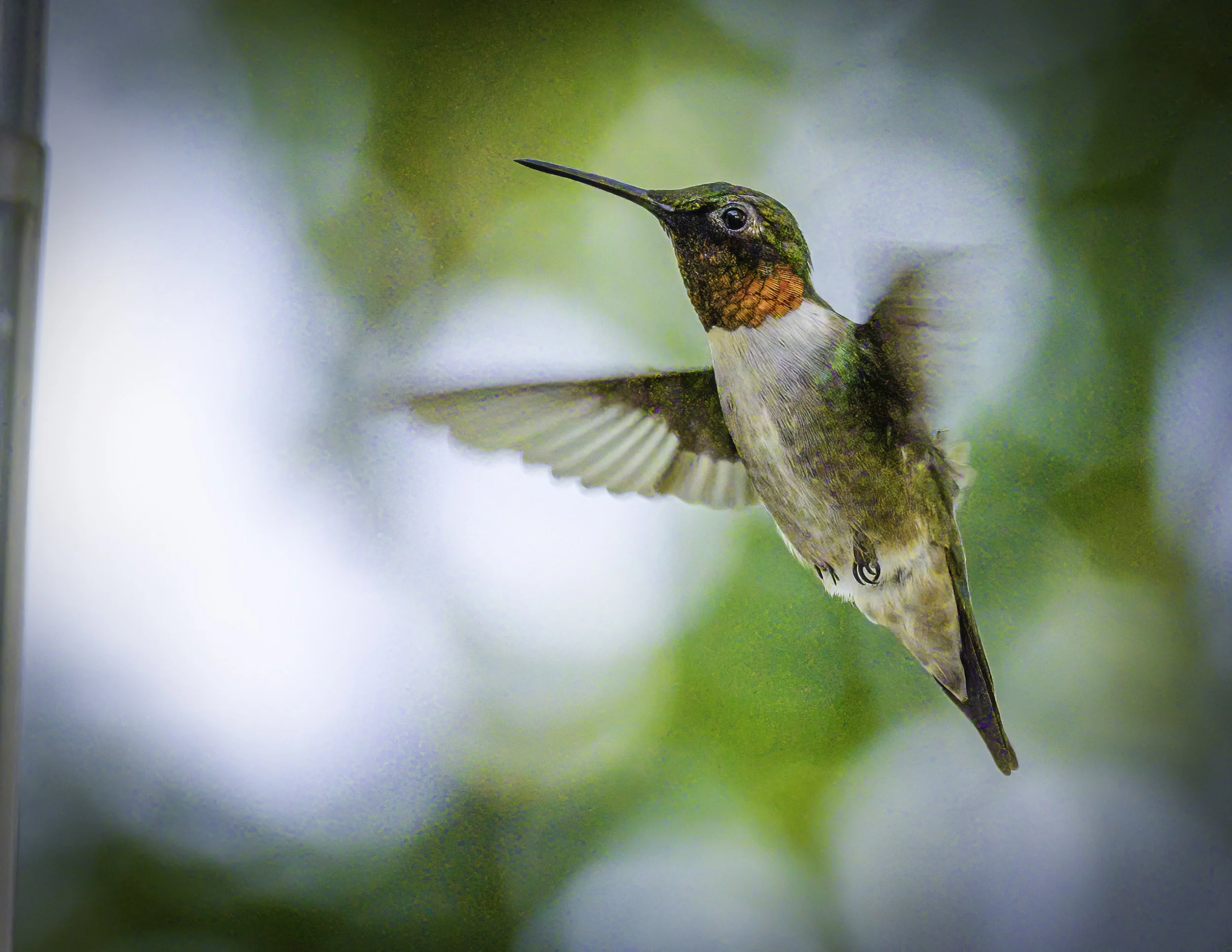Hummingbirds
It’s been a hot, wet, and stormy July and with it a surprising dearth of hummingbird activity at our feeders and flowers. Did the weather keep the numbers down, or were there other feeders and gardens nearby that occupied the hummingbirds? For whatever reason, up until the beginning of this week we logged less than a half dozen visits (at least that we witnessed) at our four feeders, our favorite hummer magnet the vermillionaire plant, and out butterfly garden
With the end of July and the advent of August, however, the little gems are starting to reappear. We have a small feeder that hangs on the window in our kitchen and it was there that we saw the hummingbirds first make their arrival known. Especially at dawn and dusk, the Ruby-throated hummingbirds have been making regular visits to that feeder and have now begun to take advantage of the others spread around the back and side yard as well.
Ruby-throated hummingbird Nikon Zfc with 50-250 Nikon DX lens 250mm 1/1250 sec, f/7.1, ISO 2500
Hummingbirds in New York State are primarily represented by the Ruby-throated Hummingbird, the only species commonly found in this region. These tiny birds are known for their iridescent green feathers and rapid wing beats, allowing them to hover in place while feeding on nectar from flowers and feeders. During the warmer months, hummingbirds migrate to New York for breeding and can often be seen around gardens and home feeders. As autumn approaches, hummingbirds prepare for their long journey south, often traveling alone to Central America. This raises the question….are these birds that have been here all summer, or are they birds that are already moving through on their long journey south?
Shot with the Nikon Zfc at 1/800 sec, f/8, ISO 2500
This is another of those species that are well-named. The throat or gorget of the males is an iridescent red which the bird may flash to ward off intruders or attract a female.
The hummingbirds that visit our yard love the Vermillionaire Fire cracker plant. Its dense long-lasting display of red tubular flowers is a real magnet for ruby-throats, and they bloom all summer into fall. This photo shows how perfectly suited for the feeding style of the hummingbird these plants are.
We are hoping our ruby-throats will be here for the month of August before heading down to Costa Rica and other points south. It is always a joy to watch them and with the window feeders we get the chance to see them really close. For whatever reason, hummers quickly adapt to the presence of humans. I have had them hover no more than a foot from my fact as I refill the nectar in the feeder. Their wing beats of over 80 beats a second create quite a buzz, so when sitting on the deck, we can actually hear them approach the feeders before we see them!
Tech Tip - Hummers will hover around the feeders making it easy to quickly focus on and photograph them. Capturing the wing beats, however, is another tricky situation. Examples of two different shutter speeds are seen above. In the first and third image seen above, the shutter speeds were at 1/1250 sec and 1/1600 sec. Even at those speeds, the wings are slightly blurred. The middle shot, was made below 1/1000 second and is noticeably more blurry while the body is tack sharp. You may wish to use a slow speed to capture the perception of motion in the wings, but remember to hike that speed up to no less than 1/1250 and higher to freeze the wing beats as in the bottom photo should that be your goal. Photographing hummingbirds is always a joy, so get out in your yard, set up a feeder or two and start shotting!


